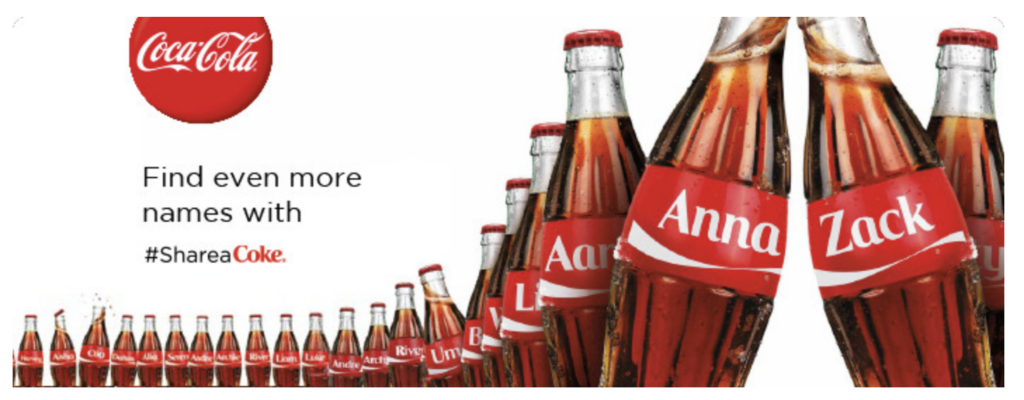Cutting through the noise to capture attention the MAIN challenge in the attention economy.
Emotional advertising is one of the methods brands use to elicit reactions on a deeper more meaningful level.
However, the path to creating truly impactful emotional advertising is full of obstacles.
Marketers often struggle to understand the fine line between genuine emotional engagement and perceived manipulation, making it difficult to craft messages that resonate without alienating their audience.
This article offers a comprehensive guide to navigating the complexities of emotional advertising. The aim is to equip you with the tools needed to create advertising that captures attention and fosters lasting connections with your target audience.
What is Emotional Advertising?
Emotional advertising is the craft of designing advertising campaigns that resonate on a deep, emotional level with the audience. It’s all about leveraging strong emotions—joy, sadness, fear, or even negative feelings—to forge a powerful emotional appeal.
This approach aims to do more than just present a product; it seeks to elicit a response beyond rational thought. By touching on the emotions that people tend to react to the most, these campaigns capture more attention, making the brand more memorable.
Whether stirring positive feelings or carefully navigating the negative ones, the essence of emotional appeal advertising is to create a lasting emotional connection between the brand and its audience.
Benefits of Emotional Advertising
The benefits of emotional advertising are clear and compelling. This strategy significantly enhances brand awareness and deepens the connection with the target audience by sparking emotional responses. Analysis of advertising campaign performance underscores this point, revealing that ads with an emotional appeal have a success rate of 31%, notably outperforming the 16% success rate of ads that prioritize rational content.
It’s not merely about pushing a product but about weaving a narrative that resonates emotionally, whether it invokes joy, empathy, or even a touch of negative emotion. Such advertising campaigns are designed to influence consumer behavior more effectively than traditional methods.
When the target audience forms a strong emotional bond with a brand, they’re more likely to remain loyal and become brand ambassadors, recommending it to others. Emotional advertising isn’t just a tactic for immediate sales—it’s a long-term strategy for building meaningful, enduring consumer relationships.
Types of Emotional Marketing Techniques
Emotional marketing employs various techniques to connect with audiences on a deeper level. Let’s explore some of the primary methods used to evoke emotional responses.
Storytelling That Resonates
One of the most powerful tools in emotional marketing is storytelling. By weaving narratives that reflect real-life experiences, joys, challenges, or dreams, brands can create a strong emotional bond with their audience. Storytelling captures the imagination and tugs at the heartstrings, making the brand’s message more memorable and impactful.
Humor That Lightens the Mood
Humor is a fantastic way to break down barriers and engage an audience. Ads that use humor entertain and create a positive association with the brand. When people laugh, they let their guard down, making them more receptive to the message. It’s a clever technique to stand out and foster a joyful connection with the brand.
Research conducted by Oracle revealed a compelling insight: 90% of individuals are more likely to recall a brand’s advertisement if it incorporates humor, underlining the significant impact of laughter on memory retention. Furthermore, nearly half of the respondents, 48%, expressed that they do not perceive a connection with a brand unless its advertising brings a smile to their face or elicits laughter, highlighting the crucial role of humor in establishing brand relationships.
Tapping into Happiness and Joy
Focusing on positive emotions, such as happiness and joy, is a common and effective emotional marketing technique. By associating their brand with these uplifting feelings, companies can encourage a positive perception and foster an environment of optimism and well-being. This approach is particularly effective in creating lasting, positive memories associated with the brand.
Utilizing Fear and Anger
While positive emotions are often the go-to, tapping into fear and anger can be powerful, especially when aiming to drive action or raise awareness about serious issues.
However, this requires a delicate balance. The goal is to provoke thought and motivate change without causing distress or alienating the audience. It’s about sparking enough concern to inspire action while ensuring the message remains hopeful and empowering.
Matching Emotion with Message
The key to successful emotional marketing lies in authentically matching the emotion with the brand’s message. The emotional content must feel genuine and relevant to the audience, whether it’s joy, sadness, fear, or humor.
Brands must navigate this landscape carefully to elicit strong emotional reactions without veering into insensitivity or exploitation.
The Basic Emotions and Their Impact in Emotional Advertising
Emotional advertising taps into our most primal feelings, steering our hearts and minds in subtle, powerful ways. Let’s break down the basic emotions and see how each can lead to distinct outcomes in advertising.
Happiness
Ads that spark joy are like a warm hug; they bring people together and spread positivity. By creating emotional ads that make us feel happy, brands can increase brand awareness and encourage customers to share their joyous experiences.
Happiness in advertising campaigns is an excellent example of how positive emotions are key to building brand loyalty and encouraging repeat purchases. It’s an effective way to create memorable content that sticks.
Sadness
While it might seem counterintuitive, tapping into sadness can be powerful. Emotional ads that evoke sadness often create a strong message, encouraging empathy and a sense of connection.
This emotional appeal can lead to a deeper emotional response, prompting people to take action or support a cause. It’s about using emotional advertising to tap into our shared human experience, making the ad, and thus the brand, more relatable and memorable.
Fear
Fear-based emotional advertising is tricky but can be incredibly effective when done right. It plays a crucial role in decision-making, often motivating people to act to avoid negative outcomes.
In advertising campaigns, evoking a bit of fear can highlight the importance of a product or service in protecting or benefiting the customer. However, balancing fear with a hopeful message is necessary to avoid overwhelming negative emotions.
Anger
Anger can mobilize and drive change. When brands use emotional advertising to tap into injustices or frustrations, they can galvanize their audience toward a common goal. When channeled positively, this strong emotion can encourage customers to support causes or advocate for change, fostering a sense of community and purpose around a brand.
Surprise
Surprise grabs attention like nothing else, making it a key player in memorable advertising campaigns. By creating emotional ads that surprise the audience, brands can generate buzz and ensure their message stands out in a crowded marketplace. This emotion is excellent for launching new products or refreshing a brand’s image, as it sparks curiosity and encourages people to learn more.
When leveraged in emotional advertising, each of these basic emotions can lead to different but equally valuable outcomes. Emotions play a crucial role in the buying process, from building trust and customer loyalty with happiness to driving action through fear or anger.
Emotional content must be crafted carefully to ensure the emotional message aligns with the brand’s values and goals, ultimately positively influencing purchase decisions. Emotional advertising isn’t just about making an impact; it’s about making the right impact, guiding the audience through decision-making with empathy, creativity, and, most importantly, genuine emotional engagement.
How To Implement Emotional Advertising
Emotional advertising is an art that, when executed well, can significantly enhance the connection between a brand and its audience. Here’s how to craft and implement a strategy that speaks directly to your consumers’ hearts.
Understanding Your Audience
Before you can evoke the right emotions, you need to understand who you’re talking to. This step is crucial and involves more than just demographic data.
- Conduct Focus Groups: Gather groups of people from your target audience to discuss their needs, desires, and the types of messages that resonate with them. This qualitative data is invaluable for tailoring your emotional advertising approach.
- Utilize Eye Tracking: For a more scientific approach, eye tracking can reveal how potential customers engage with existing content, indicating what grabs their attention and triggers an emotional response. In a 2020 survey, it was reported that 39% of respondents employed eye tracking as a method for conducting research. This statistic underscores the significance of eye tracking in gaining insights into consumer behavior, providing valuable data on how visual elements and messaging can be optimized to capture attention and evoke the desired emotional responses.
Crafting Your Message
With a deep understanding of your audience, you’re ready to craft a message that hits the right emotional notes.
- Choose the Right Emotion: Based on your audience research, decide which emotion(s) your campaign should evoke. Whether it’s happiness, empathy, motivation, or concern, your chosen emotion should align with your brand’s message and goals.
- Develop Authentic Content: Create content, be it videos, images, or text, that genuinely conveys the chosen emotion. Authenticity is key to emotional impact, so ensure your message feels sincere and true to your brand’s values. 88% of consumers indicate that authenticity plays a crucial role in determining which brands they favor and support. This statistic emphasizes the importance of authenticity in content creation, highlighting that consumers are more likely to engage with and support brands that demonstrate genuineness and align with their values and expectations.
Themes That Resonate
Selecting a theme that aligns with your brand’s values and your audience’s interests or concerns can amplify your campaign’s impact.
- Address Social Issues: Campaigns that touch on themes like gender equality, environmental sustainability, or social justice can generate strong emotional reactions and drive engagement.
- Universal Experiences: Themes that revolve around universal human experiences, such as family, love, or personal growth, can also create a powerful emotional appeal, making your brand more relatable.
Measuring Emotional Impact
Finally, it’s essential to assess the effectiveness of your emotional advertising campaign.
- Surveys and Feedback: After launching your campaign, use surveys and feedback forms to gather direct responses from your audience about how the campaign made them feel and whether it changed their perception of your brand.
- Engagement Metrics: Analyze engagement metrics such as likes, shares, comments, and view times to gauge the emotional impact. High engagement levels are often a good indicator that your content has resonated emotionally with your audience.
5 Examples of Brands That Did It Right
Several brands have set the gold standard for emotional advertising, creating campaigns that resonate deeply with audiences worldwide.
Let’s get deeper into specific campaigns that show this approach.
Coca-Cola: “Share a Coke”

Coca-Cola’s “Share a Coke” campaign is a prime example of emotional advertising done right. Coca-Cola turned every sip into a personal and shareable experience by personalizing bottles with names and phrases. This campaign leveraged the joy of sharing and the happiness of personal connections, reinforcing Coca-Cola’s position as a brand that brings people together.
Nike: “Dream Crazy”

Nike’s “Dream Crazy” campaign, featuring Colin Kaepernick with the tagline “Believe in something. Even if it means sacrificing everything,” took emotional advertising to new heights. This campaign tapped into the emotions of determination, courage, and empowerment, encouraging individuals to dream big and stand up for their beliefs. It wasn’t just about selling sportswear but about inspiring action and resilience.
Dove: “Real Beauty Sketches”

Dove’s “Real Beauty Sketches” campaign brilliantly captured the emotional appeal of self-acceptance and the recognition of inner beauty. By showing women they are more beautiful than they think, Dove challenged societal beauty norms and encouraged a positive conversation about self-esteem. This campaign elevated Dove’s brand and sparked a global dialogue on beauty stereotypes.
Apple: “Shot on iPhone”

Apple’s “Shot on iPhone” campaign brilliantly demonstrates the emotional impact of creativity and innovation. By showcasing stunning photographs and videos taken by iPhone users worldwide, Apple highlighted their products’ incredible capabilities in real, relatable ways. This campaign emotionally engaged customers by illustrating the creativity, adventure, and moments of life captured through an iPhone, making technology personal and impactful.
Google: “Year in Search”

Google’s “Year in Search” series annually encapsulates the emotional rollercoaster of the year, highlighting the most searched terms and showcasing stories of hope, resilience, and curiosity. These ads evoke many emotions, from inspiration to empathy, reflecting on shared human experiences. Google, through these campaigns, demonstrates how its services are intertwined with the fabric of our lives, making meaningful connections with its audience.
These examples underscore the power of emotional advertising in creating memorable, impactful campaigns that do more than sell products—they tell stories, evoke feelings, and build lasting connections. Brands like Coca-Cola, Nike, Dove, Apple, and Google show us that at the heart of effective advertising lies the ability to touch the audience’s emotions, fostering a deep, enduring bond beyond mere transactions.
Conclusion
Emotional advertising is a testament to the power of storytelling, creativity, and genuine connection in marketing. Through the artful evocation of emotions, brands achieve more than mere transactions; they create memorable experiences, foster deep relationships, and inspire actions that resonate personally.
Coca-Cola, Nike, Dove, Apple, and Google’s success stories offer invaluable lessons in leveraging emotional appeal to build brand loyalty and connect with audiences meaningfully.
As we move forward in an ever-evolving digital landscape, the essence of emotional advertising—its ability to speak directly to the heart—remains a timeless and powerful tool in crafting messages that capture attention and leave a lasting imprint on our collective consciousness.





